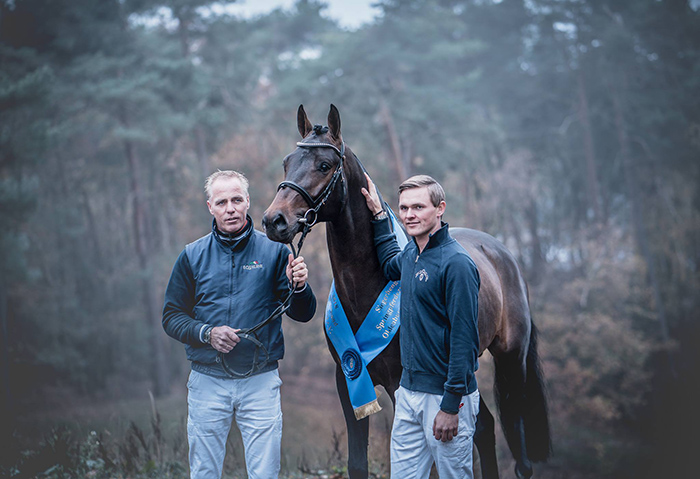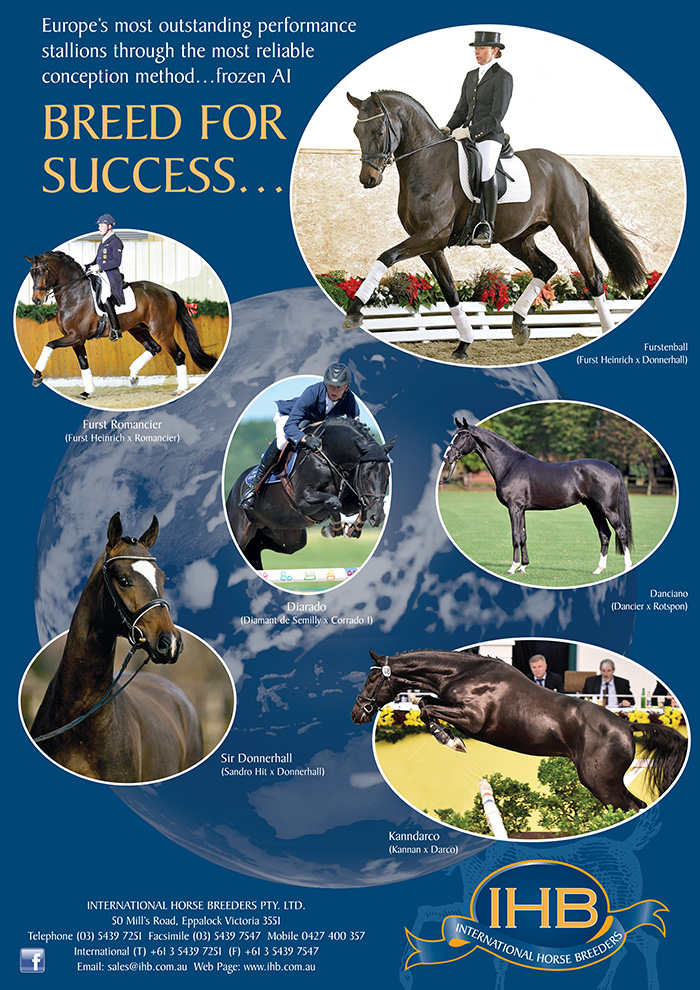
Rene and Maurice Tebbel with their stallion, Don Tryon
Earlier this month accomplished showjumper, stallion owner and breeder Rene Tebbel published a comment on his website, http://www.rene-tebbel.de that sparked a robust debate about the performance test and licensing procedures for Warmblood stallions. His view — stallions are being tested too soon and too hard:
“My stallions again performed well during the 14-day tests this year. Our testing stations are really doing a great job and I have always been confident that my stallions are being looked after very well. However, in my opinion there’s still a big BUT.”
“The stallions are going to the licensing at 2.5 years of age, so the preparations for this must start several months in advance. After the licensing in autumn there’s the 14-day test in spring, and leaves not enough of a break in between. These young stallions could certainly do with another six months to mature and recover from the pressure of the licensing. The 14-day tests don’t always provide an accurate reflection of the quality of the horses, and I don’t think that the scores really align with the sport. And that’s not even the end of it, there are more 3-day and 14-day tests down the track.”
“All these testing events put a lot of pressure on the young horses and are surely not in line with animal welfare and true horsemanship. The financial burden for stallion owners is also immense, with expenses that don’t provide any benefit and are not supporting the horse’s health and well being.”
“I believe the whole system has to be reviewed and amended. One suggestion is to hold the licensing in February instead. Stallions would benefit from the additional six months and have turned three years of age by then. Then you could breed with them for a year and look at their offspring in the following year. I honestly think the industry would regulate itself then. If breeders don’t approve of the foals then the stallion will not be in demand anyway. However, the offspring could also be officially assessed and a decision be made then. The stallions could perhaps also compete at a couple of shows as four-year olds and prove themselves under saddle. If a stallion can’t perform due to injury, his rideability and quality can still be checked during a test.”
“These are just some of my thoughts, but I firmly believe that our young stallions are being tested too soon at the expense of their welfare and healthy development. In my experience the system is inadequate and meaningless. This is of course my personal view. Perhaps you have other ideas or suggestions, but I think it is very important and in the interest of every party — horses, breeders, riders — to have another healthy discussion on this topic.”
Original document: http://www.rene-tebbel.de/cms/de/news/hengste-im-test-mit-einem-dicken-aber.html?fbclid=IwAR2XH_QDWobCA1obLAQnBsTZcqgFY0jAnolxmjJFpQPPpsHUyvAchr7sA-4


Testing of all young horses, whether for young horse classes or stallion testing, can only ever work for those for whom nothing goes wrong. Any issue or accident which interferes with the stringent regime precludes success in that regime, but is not necessarily a reflection of the quality of the horse.